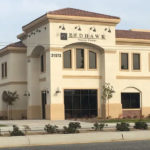
Dr. Broyles’ practice, Redhawk Vision Center. Dr. Broyles says a few key investments have been a long way to enhancing care and driving profitability.
By Donny Broyles, OD
June 29, 2022
Practice investments can ensure you are delivering the highest level of care to your patients while significantly driving profitability. The right investments also can affirm the branding of your practice as being on the cutting-edge. Here are a few investments I made that are doing as much for patients as for my practice.
Intense Pulse Light (IPL) Technology
Nearly 16 million Americans have dry eye, according to the National Eye Institute. This condition can lead to substantial discomfort and can adversely impact a patient’s vision. It also can damage a patient’s quality of life. Many of these people have tried multiple medications and treatments that have failed.
With effective dry eye treatment still such an unmet need, I decided to add Lumenis M22, an IPL technology that reduces inflammatory mediators, alleviates abnormal blood vessels, improves tear breakup time and restores meibomian glands and decreases demodex.
Offering treatments via this technology allows my office to deliver full-scope dry eye treatment, and frees some of my patients from the need to use prescription eye drops. IPL has provided great outcomes for my dry eye patients, and especially for those with ocular rosacea.
Cost: The system cost less than $60,000, and was acquired using an equipment finance loan to make the purchase. The practice debt service was $997 monthly. It took me six months to break even from this investment and two months to start profiting from it.
Profit: The average treatment costs patients $1,300, which is paid out-of-pocket. That means that just one treatment per month covered the cost of the technology. Getting that minimum one treatment per month wasn’t hard for us, as our office already had a large existing population of dry eye patients. These were patients waiting for a better treatment to try, who were open to IPL. Having that dry eye population base already in place before investing in this technology was a key to making it profitable for us.
Pre-pandemic, the technology generated $160,000 in revenues annually, a number that I feel we are on track to return to this year.
OCT Angiography
As we continue to grow our medical eyecare services, optical coherence tomography angiography (OCTA) seemed like it would make a great addition to our office. As described by the American Academy of Ophthalmology’s EyeWiki, OCT-A technology “uses laser light reflectance of the surface of moving red blood cells to accurately depict vessels through different segmented areas of the eye, thus eliminating the need for intravascular dyes.”
This instrument allows us to derive more diagnostic information than retinal imaging on screenings, adds to our tools for treating glaucoma and helps us better manage macular degeneration patients. We are able to provide complete care and save time for our patients with the enhanced diagnostic data. This instrument creates a screening tool profit center, enhancing our ability to see and treat a greater number of glaucoma and macular degeneration patients.
Other Articles to Explore
Cost: We purchased the Optovue Avanti for less than $50,000 as a trade-in. The cost was reduced by $20,000 due to trade-in. The practice acquired it through an equipment finance loan. Debt service was $750 monthly. Optovue offered great trade-in values for their first-generation Rtvue OCTs when the new technology came to market. We traded in our previously purchased system.
Profit: It took us just nine months to break even from this investment, as monthly screenings using this instrument in our office generated $4,875. A month after we acquired it, we began profiting from the investment.
All told, our OCT-A generates $94,500 in revenues annually.
Handheld Tonometer
Another instrument that strengthened our medical eyecare is the iCare tonometer. We purchased this instrument to increase clinic efficiency, maintain reliable pressure readings and provide a tool with an approachable learning curve for staff to use.
This instrument provides an easy, fast way to measure the intraocular pressure of patients in a sitting or standing position. In addition to routine screenings, this is a tool that can come in especially handy for glaucoma screenings.
Cost: Our tonometer cost less than $3,000, which we used a cash-out payment to acquire. The iCare tonomometer was a nominal cost to the practice and did not require financing. We were able to make a lump sum payment to the vendor.
We measured IOP exclusively by Goldmann Applanation, which required anesthetizing every patient. By integrating Icare tonometry, which does not require anestheics, allowed for more efficient patient flow and quality chair time.
Profit: It took us no more than around three months to break even and start profiting from use of this tool. Our profitability was enhanced because it helped streamline our clinic’s patient flow, allowing us to book around three more patients per day.
Patients appreciate the time saved during their appointment, and it gives me more time in the exam room with each patient. That’s more time to educate patients about the treatments and products I have prescribed, increasing the chances of patients returning for care and purchasing products from us.
 Donny Broyles, OD, is a VSP network eye doctor at Redhawk Vision Center in Temecula, Calif. He received his Doctor of Optometry degree at the University of Houston College of Optometry. Dr. Broyles is passionate about educating his patients on the importance of eye health and its relationship to general health, including diabetes. To contact him: drb137@earthlink.net
Donny Broyles, OD, is a VSP network eye doctor at Redhawk Vision Center in Temecula, Calif. He received his Doctor of Optometry degree at the University of Houston College of Optometry. Dr. Broyles is passionate about educating his patients on the importance of eye health and its relationship to general health, including diabetes. To contact him: drb137@earthlink.net





















